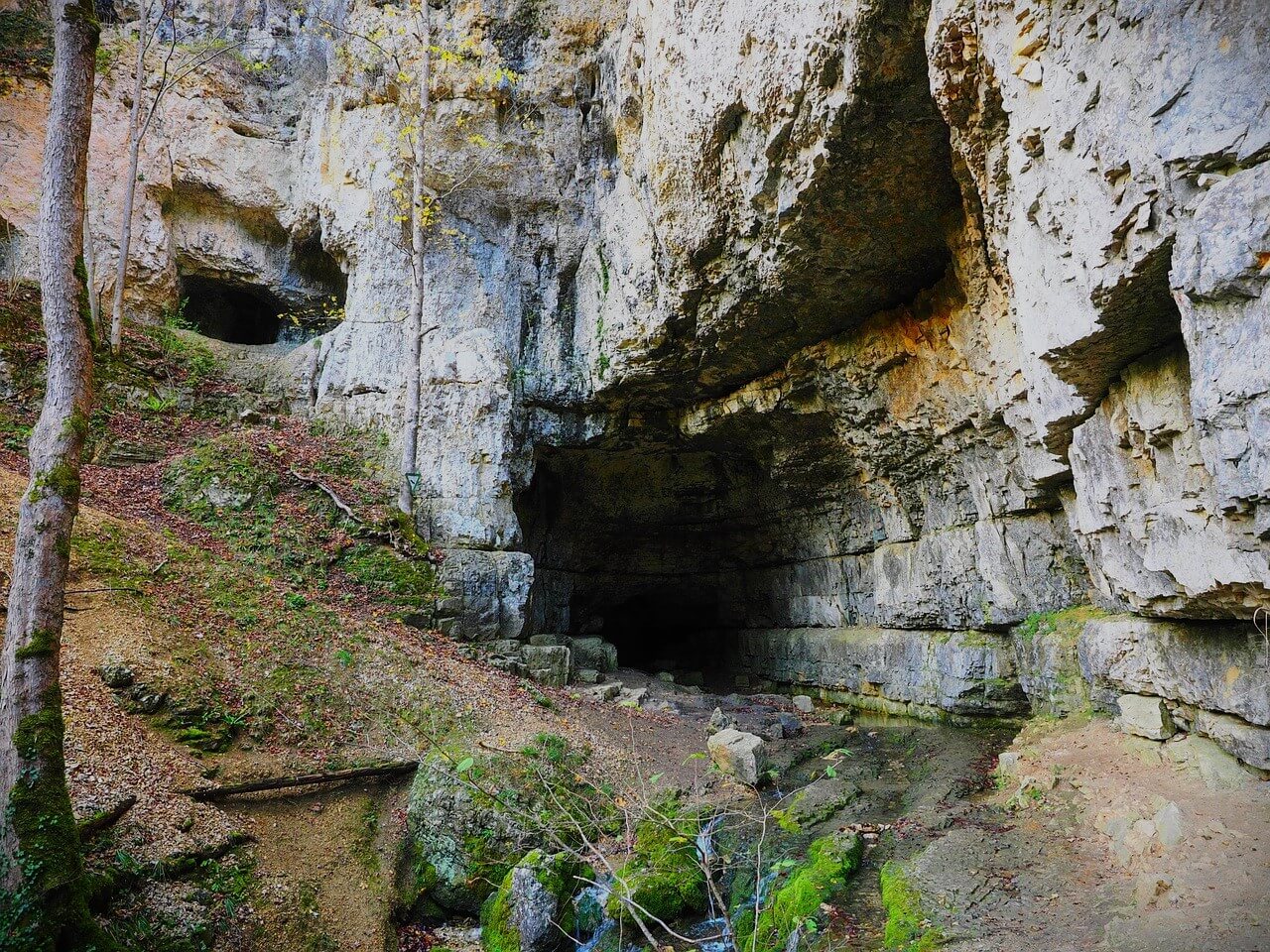Fellow game master, let us talk for a moment about caves.
Why? Because monsters live in caves, and you are the keeper of monsters.
Table of Contents
Describing Caves
Caves form as water erodes soft stone such as limestone. It starts with a flowing stream or waves on a shore. When the stream surges or the tides rise, the water laps against the solid stone and slowly slowly dissolves particles from it. A hollow forms, and as the water washes into the hollow the water finds a crack in the stone that erodes more quickly. Over time a string of hollows is carved out. And the river changes its course or the land quakes and lifts earth into cliffs, and the caves are now dry. Now the caves make a very pleasant home for things that scuttle across the earth.
A cave could form from the top down. Rain and runoff pool on stone and slowly eat it away, leading down down down from a small circle of sunlight. Groundwater could carve out an entire invisible system that is undetected until the underground river breaks out lower down the mountain. Or until something crashes through the ceiling.
Many caves are narrow and impassible.
No caves are at the bottom of a well.
Wells are dug into dirt and into an aquifer of sand or gravel that holds water. Well shafts do not lead into massive caves where someone has forgotten their chests of treasure.
My adventurers have fought something at the bottom of the well before, and because they had the sense not to climb down the shaft it was a brief, one-sided battle of firing down the hole.
Next time I shall give the well-dweller grasping tentacles and a nasty bite. Or goopy globs of sticky spit, or perhaps an acid spray. Next time the well-dweller will have something the players want, something that will tempt them to climb down and retrieve it.
Rarely is it necessary to bait your players to enter a cave. They believe that caves hold mystery, danger, and treasure, and they will want these. Your job is to make the cave meet these expectations.
First, a cave must feel different from other environments. The cave is dark, so they must carry a light and risk drawing unwanted attention. There should be something mindless and hungry that is drawn to their light, whether it is merely irritating winged insects or a monstrous and terrifyingly angry worm. The passages are narrow, so they cannot fire a longbow or use any weapons with reach (e.g. polearms) without penalty. There may be pools of water. There are probably stalactites, providing some amount of cover to targets of ranged attacks. There are also many, many shadowed corners in which to hide. Use this to your monsters’ advantage.
The cave should have a presence. It is cold. You hear the sound of distant dripping. The ground slopes downward. The top of your head grazes the ceiling, and you stumble on the uneven floor. Your armor and gear jingles as you walk, and you hear echoes of it all around you. You hear a whistling sound and cannot detect its source. You have lost all sense of time.

Populating Caves
Remember that everything needs to eat. If you select a nasty monster to rule the cave, consider what it consumes. This will help you populate the cave system with creatures and fungi that can become encounters. Perhaps a monster has eaten an adventurer, and their dropped gear is lying in plain sight—at the back of the monster’s lair. There could be a rival head monster, or a community of intelligent creatures who have established a degree of order. Just remember that they, too, need to eat.
Consider who else has used, is using, or will use the cave. Bandits hiding their ill-gotten gains? Cultists practicing dark rituals? A reluctant prince shirking his royal duties? A group of girls from town masquerading as goblins because they don’t want to be married off to the boys in the village? Any of these could leave behind evidence of their activities, be interrupted by the characters, or interrupt the characters during their exploration.
(We played the girls disguised as goblins in the early days, and it was a great deal of fun. A trifle contrived, but worthwhile.)
Rewards
And finally, consider the reward the players receive for their trouble. Is it loot, experience, or a passageway to a new location? Is it a problem solved or an exciting new problem gained? Survival is its own reward, but it is good to have more appreciable gains.
There should always be at least a little loot. They will be disappointed if not.
One of our caves had a mysterious and ancient fountain with the crumbling visage of a mischievous demigod. Drinking from it granted the characters a temporary boon similar to the Enchanted Springs in Tasha’s Cauldron of Everything. The players were hesitant to drink at first, but after one did and was rewarded, the rest enthusiastically joined in. Did the character who could already fly need double-jointed fingers and the ability to climb walls? No, but they enjoyed it.
Exploring caves ought to be both dangerous and rewarding. The difference between exploring a cave and a forest should not merely be the types of creatures present, but a true difference in environment with unique atmosphere and challenges.

Other Resources
You may enjoy these materials from other creators:
- The Underclock by Goblin Punch (I have not tried this mechanic but it sounds dramatic)
- Random Cavern Generator by donjon
And the next time you find yourself deep underground, listening to a distant and persistent drip, remember to look out for eyes in the dark!





Add your thoughts